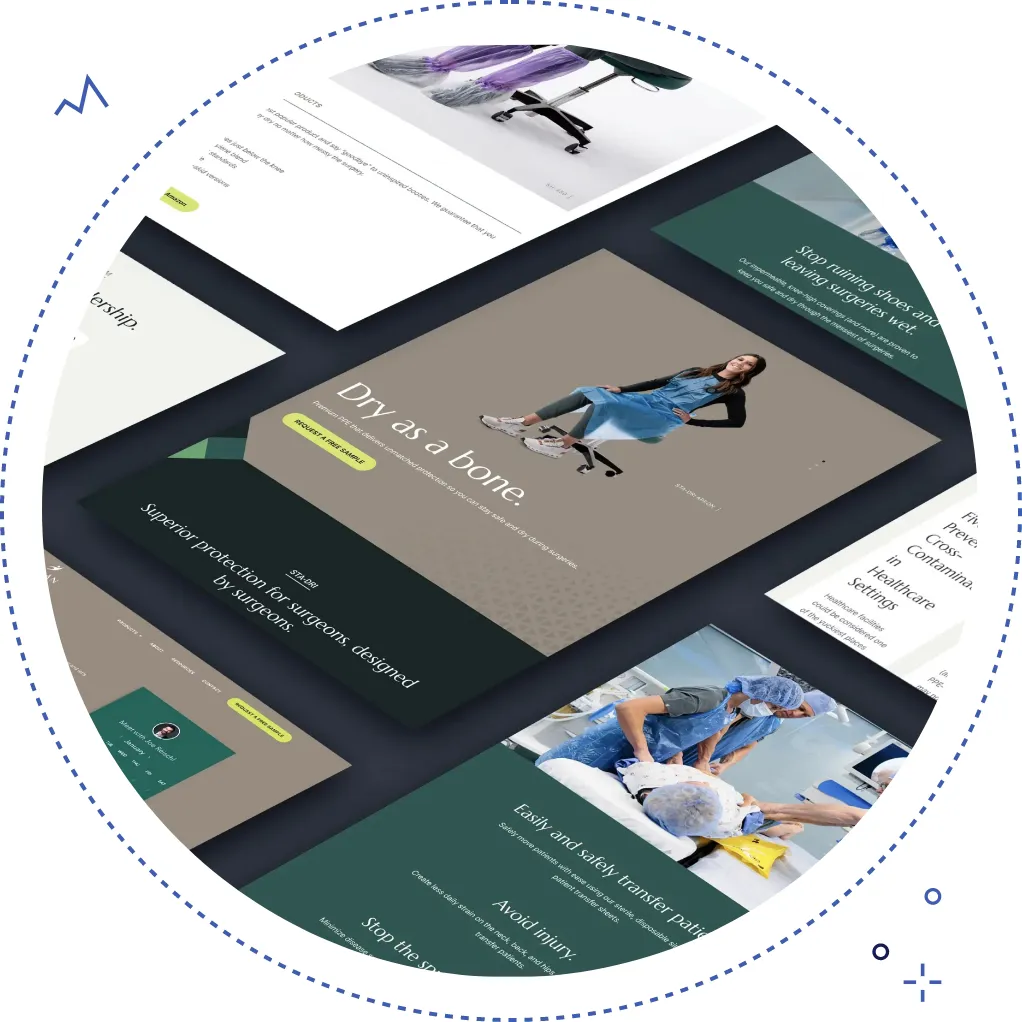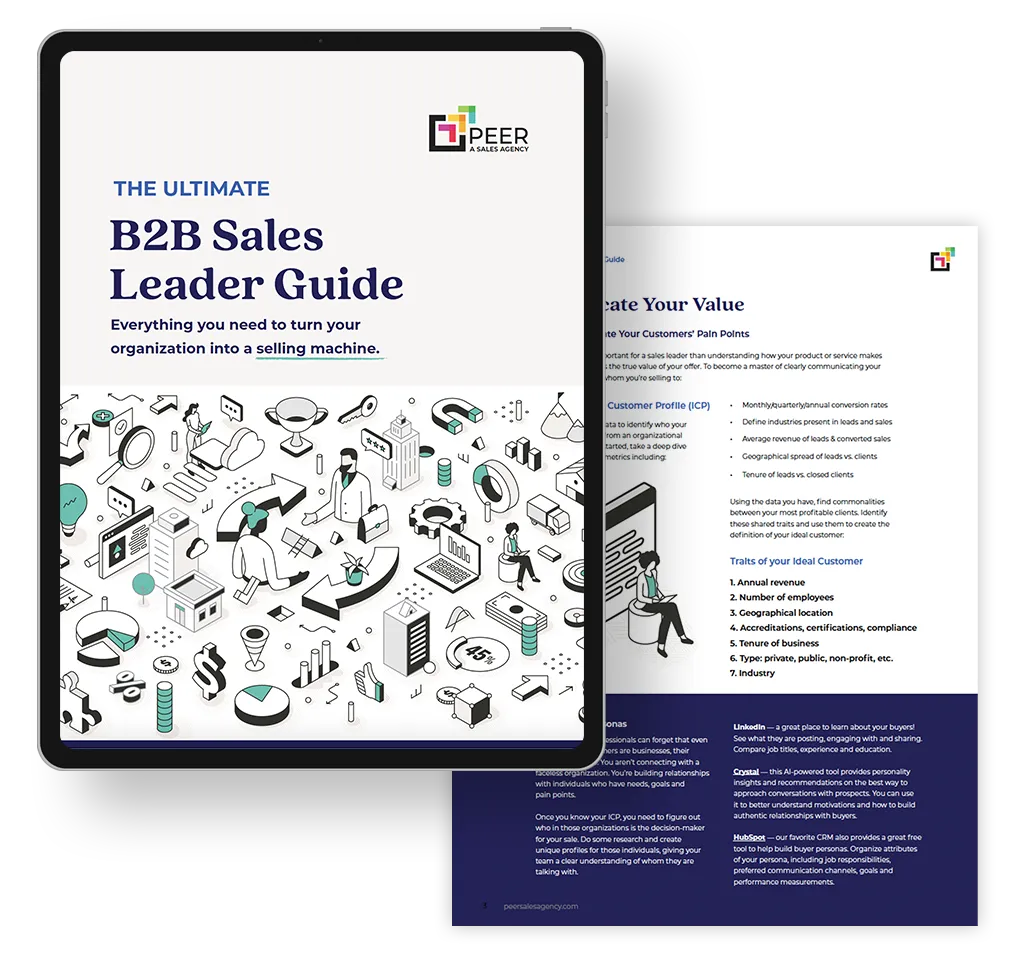Did you know that a well-designed brand, used consistently across your sales materials, can increase revenue by up to 23%? Yet, many sales leaders balk at the investment in design, deterred by concerns over cost, the time it takes to see tangible results, and the elusive nature of measuring its return on investment (ROI).
You must look at how design goes beyond aesthetics to become a pivotal driver of business success — establishing trust among prospects, boosting customer engagement, and, ultimately, propelling sales growth. Here’s how:
Design Establishes Professionalism And Trust
We’ve all seen websites that make you question if the company is working out of their brother’s basement. Even if you are working out of your brother’s basement, your customers don’t need to know.
Incorporating quality design throughout your brand, from logo to website and even your sales enablement materials, isn’t just about looking good—it’s about establishing trust with new prospects.
First impressions count. According to Google, it takes about 50 milliseconds (0.05 seconds) for users to form an opinion about your website that determines whether they like your site or not – and whether they’ll stay or leave. A statistic like that turns a well-designed website from a nice-to-have into a must-have.
Great design is a silent herald of legitimacy. In industries where professionalism equals trust—think finance, healthcare, or legal—such polished presentation is non-negotiable. When your logos, colors, and fonts echo across every point of contact, your brand doesn’t just stand out—it starts to feel like an old friend. This consistent identity fosters recognition and trust, growing stronger with each encounter.
Design Helps Capture More Leads
Generating leads is an area we see many small businesses struggle in. You aren’t just competing with other companies like you – you’re competing with, well, every other business looking for leads. Think about how much of your social feed is filled with offers.
You’ve really got to stand out to draw in prospects. This could mean social ads, landing pages, or trade show collateral. It takes work to get potential customers to act.
A well-designed CTA (Call-to-Action) should be clear, enticing, and communicate value. It also needs to stand out from the other content on your page. Here are three stats to help prove this point:
- According to HubSpot, changing the color of a CTA button can increase conversion rates by up to 21%.
- Small Business Trends reports that CTAs placed directly underneath an offer get 121% more clicks than CTAs at the bottom of the page.
- A study by Oracle suggests that buttons typically generate higher click-through rates when they feature rounded corners, which draw the eye more than square corners.
But good design isn’t limited to eye-catching buttons. It encompasses the entire user experience. This means creating sales assets that are intuitive and easy to scan. Your target buyers are busy, and no one enjoys struggling through information to find the key point. Great design can help potential leads quickly find what they’re looking for and boost your chances of making a sale.
Read: How to design a website homepage that converts?
Design Helps You Complete Against Larger Competitors
Effective design can be a powerful equalizer for small businesses competing against larger industry players. A well-designed website, logo, and sales materials can project the image of a larger, more established company.
As Donald Miller once said, “Customers don’t buy the best brands; they buy the ones they can understand the fastest.” Having a clearly designed message that speaks to users’ pain points and quickly identifies how you can help them is a secret weapon for smaller organizations.
And with limited marketing budgets, you want to ensure every interaction counts. Superior design enhances user experiences across all platforms, whether making a website easier to navigate, improving the readability of product information, or simplifying a buying process. Each of these design decisions can significantly impact conversion rates.

From outdated to outstanding
“We have a pretty serious international footprint, but our website screamed ‘small business.’ We needed the website to reflect the actual capabilities of our product.”
– Joe Reischl, VP of Sales
Design Can Improve Search Engine Ranking
Wait, what? Can design impact your search engine ranking? Yes.
- Improved User Engagement: A well-designed website naturally attracts more visitors, encourages them to stay longer, and interacts with more content. Google monitors user behavior metrics such as time on site, page views, and bounce rate. Positive user engagement metrics can signal to search engines that the website is valuable, thereby improving its ranking.
- Faster Page Load Times: Design elements can heavily impact the speed at which a page loads. Optimized images, streamlined code, and the proper use of CSS and JavaScript can reduce loading times. Since page speed is a direct ranking factor for Google, improving load times through good design can lead to better SEO outcomes.
- Enhanced Accessibility: Accessibility is an essential aspect of website design that involves making a site usable for everyone, including people with disabilities. Accessible design features such as alt text for images, proper contrast ratios, and accessible navigation help search engines better understand and index website content. So, while Google says accessibility isn’t a direct ranking factor, Improved accessibility can broaden audience reach and engagement, indirectly boosting SEO.
Read: Do Small Businesses Really Need To Make Their Website Accessible?
- Structured Data and Schema Markup: A good web designer understands the importance of quality code. This backend element of web design doesn’t affect the visual aspect but plays a crucial role in SEO by organizing data and aiding in rich snippet displays in search results, which can increase click-through rates.
Good Design Doesn’t Have to Break the Bank
Great design doesn’t always have to be expensive. The key is finding a design partner who can efficiently manage your budget. Perhaps you don’t need a complete overhaul, just a slight refresh. Or maybe you’d be best off updating certain elements and building a roadmap to align the rest of your sales components over time. That said, it’s also important to consider the cost of bad design. Bad design will cost you more in missed opportunities in the long run. If you are curious about what could be done to enhance your company’s design, let’s schedule some time to talk.



